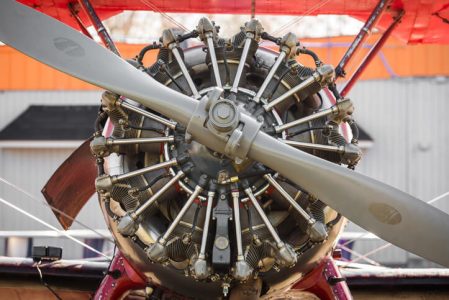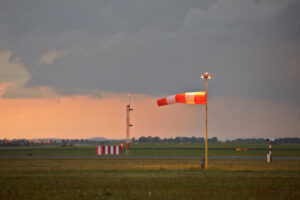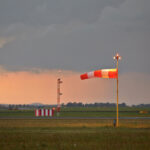Radial Engines in History
There is a reason why radial engines were so popular back in the day. They were able to produce incredible amounts of power for their weight, while also having exceptional cooling capabilities and a unique configuration. WWII aircraft like the B-17, B-25, and P-51 fighter used massive radial engines for power and were very successful.
A radial engine is a reciprocating type internal combustion engine configuration in which the cylinders radiate outward from a central crankcase like the spokes of a wheel. The radial engine was first created in 1901 but took about 10 years to be considered trustworthy for aviation purposes.
Why This Engine is Unique
The radial engine has the same valves, pistons and spark plugs found in other four stroke engines, but it has a unique crankshaft. While multi-cylinder car engines have a long shaft, a radial engine uses a single hub. All the connecting rods for the pistons connect to this hub and are arranged in a circle around the crankshaft.
The construction and attachment of the cylinder head is critical to this engine design. The head and cylinder are machined separately and then the head is screwed onto the cylinder, creating a super tight connection, while also eliminating the need for studs or bolts. Then the flange is manufactured after the head is screwed on, which guarantees perfect alignment.
Benefits of Radial Engines
Even though modern technology makes engines more efficient and much simpler to operate, the older radial engines still had some advantages.
- They were very easy to maintain because of the open access to the internal engine parts.
- They were built to be incredibly durable, a must for wartime operations.
- They were very reliable because of their simple design, short crankshaft and minimal vibrations.
Uses for Radial Engines
For the most part, radial engines have been replaced by more modern, efficient engine designs. Reciprocating, turboprop and jet engines power today’s aircraft and they do it in ways that are much better for the environment than the old oil guzzling radials. That’s not to say that radial engines don’t exist anymore – they just aren’t the primary engine design for modern aviation. Here is where you can still find the original version of the radial engine:
- Historic aircraft: WWII museums are full of examples of the radial engine, and many are still operational today.
- Industrial applications: Power generators and farming equipment still use radial engines because of their reliability and immense power.
- Experimental and homebuilt aircraft: restoring vintage engines or building custom designed new radial engines can make a DIY aircraft project extraordinary. It just takes someone with a working knowledge of these engines to bring the past to life.
Without question, the radial engine has a solid place in aviation history and is still admired today, even with modern technology and the advanced knowledge that comes from decades of trial and error. The nostalgia of these engines will remain steadfast for years to come. Hopefully our museums will keep the fascination alive.
RELATED READING
RELATED CTS TRAINING









